Light‐emitting diodes (LEDs) are commonly used for treating a variety of disorders in horses, including wounds. Despite anecdotal claims that these LEDs shorten healing times, there is a lack of scientific evaluation regarding their effects. To address this question researchers in Sweden performed a randomised, blinded, controlled study to investigate how pulsating visible red light (wavelength approximately 637 nm) and near‐infra red (NIR) light (wavelength approximately 956 nm) affect swelling and wound healing in healthy horses.
Eight, healthy, adult Standardbred horses had a 2 cm diameter, full‐ thickness skin wound created on both sides of their neck under sedation and local anaesthesia. The wounds were left uncovered to heal by secondary intention. One wound per horse was randomly allocated to receive light‐emitting diode (LED) treatment on Days 0–4, 7–11, 14–18 and 21–25, with the wound on the opposite side of the neck acting as an untreated control. Treatment was conducted using a handheld device (BCD 650 Animal, Biolight AB) using a pre‐set programme with a duration of 4 min and 40 s (red light was emitted for 95 s and NIR light for 185 s). The horses were checked daily for general status, fever and signs of wound infection. The horses’ manes were braided during the entire study period. The wounds were evaluated for swelling using ultrasonography on treatment days and photographed daily. Wounds were considered to be healed when an epithelial (skin) layer covered the entire wound surface.
None of the wounds showed clinical signs of infection over the study period. Wound area and degree of swelling did not differ between the treated and control groups on any day. There was a significant difference (P = 0.03) in mean (average) healing time between control and treated wounds, with LED light‐treated wounds (51.8, 95% CI = 38.7‐64.8 days) taking longer to heal than control wounds (49.0, 95% CI = 35.4‐62.6 days). However, this difference was small and in a small number of horses and is therefore probably of limited clinical relevance. The wounds were only treated until day 25 and therefore it is impossible to exclude an effect of LED therapy in later wound healing.
References
Michanek, P, Toth, T, Bergström, E, Treffenberg‐Pettersson, H, Bergh, A. Effect of infrared and red monochromatic light on equine wound healing. Equine Vet J. 2020; 00: 1– 6. Click HERE

